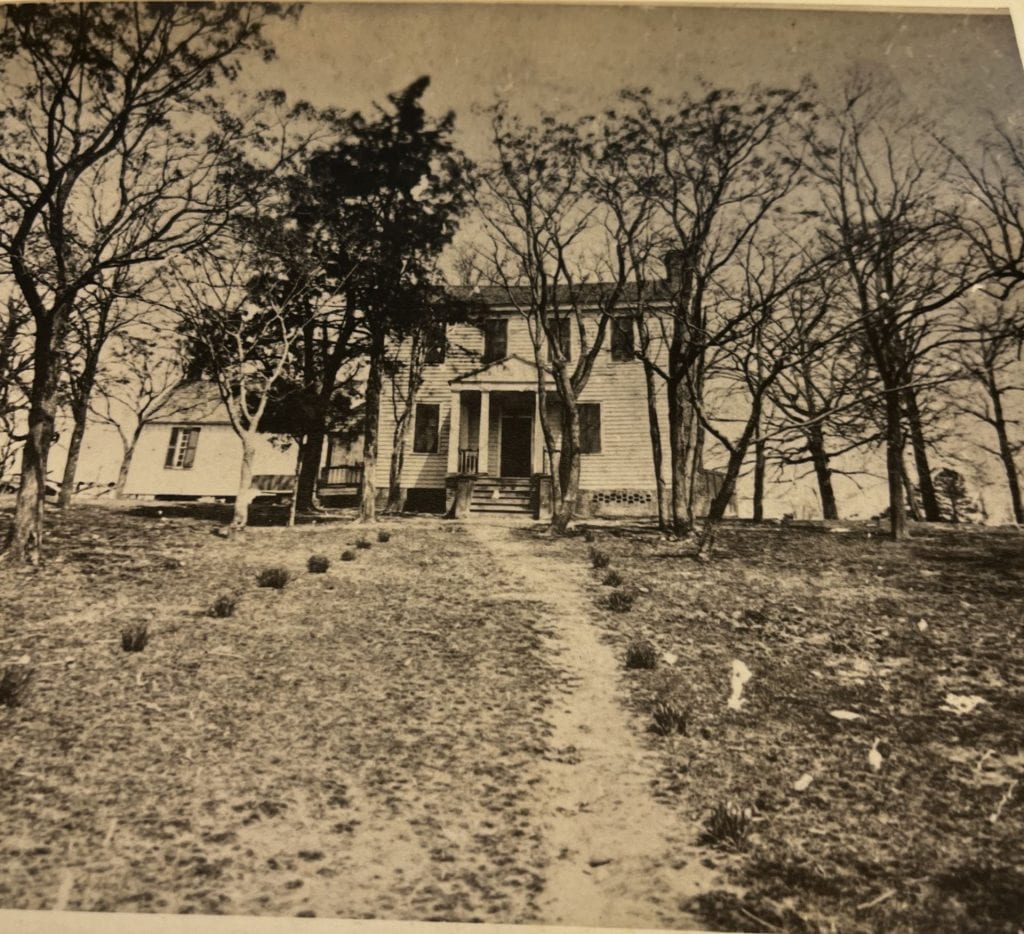Town Lives in the Railroad Age
Before the town of Crawfordville was even a decade old, a group of enslaved workers undertook a difficult task. They followed the directions of a Methodist minister and his sons and provided the necessary muscle to move a two-story dwelling from Powelton, Hancock County, eleven miles down rough roads to the seat of Taliaferro County. The dwelling was situated on the northern outskirts of a village whose streets had in 1826 only been lines on a surveyors’ sketch.

With this arduous physical relocation, new routines emerged for those in the household ruled by the Rev. Williamson Bird. Bird’s nearby plantation was thriving at the time, as some two dozen slaves tended to his cotton crop. When he shifted his regular residence from the countryside to the old house in the new town, Bird placed white and Black kin (and the handful of boarders he took in) in close proximity to an imposing brick courthouse, to multiple taverns, and to stores and mechanic shops. That cluster of establishments provided opportunities for enslaved men and women to earn meager sums of cash, to trade items, to fraternize with others, and to participate in the town’s white-dominated religious life. The 1835-36 extension to Crawfordville of the Georgia Railroad knit its residents into broader networks of transport and exchange. Regularly scheduled cars passed down tracks that lay within scarcely a hundred yards of the Bird residence.

This buzzing world of comings and goings shaped the experiences of those who remained in Crawfordville after Williamson Bird’s 1842 death. A core group would eventually pass to the control of Alexander Stephens. Among the enslaved were Martha (also called Mat), the chief cook of the Bird house (who with husband Dick saw the birth, and then the departure, of a son named Dave); Pierce, a young boy who saw mother and then sister conveyed away as human merchandise; and the carpenter George, who with a wife named Anna would rear a young girl, born of other parents, who they treated as their own.
Free people of color were a part of town life as well. These individuals were required by state law to have a guardian (or “best friend”) to vouch for them annually. The intertwined families of the Grants, Floyds, and Joneses relied on Williamson Bird and others as early as the 1820s. Several would be listed as being under the supervision of Alexander H. Stephens during the 1850s and early 1860s. In the post-emancipation period, the fate of these families continued to be intertwined with this powerful white patron.
A recent graduate of Franklin College, Stephens took up residence at the Bird House in 1834 and launched his legal practice at the nearby courthouse. The fact that he was the step-nephew of Bird’s wife made the residence an obvious choice for the young lawyer. Stephens called this place home for almost half a century, living first with other white professionals who resided there and then as outright owner. The aged Rev. Bird named Stephens to be the administrator of the family’s Taliaferro estate and in the stretch of years it took to execute this duty, he kept house with brother Linton Stephens and two Bird orphans: John L. Bird and sister Sallie Bird, who would raise a family of Bakers in Augusta after her marriage. Keeping the household running were those who had earlier been enslaved by the Birds.
As boarder and then owner, Stephens dotted his correspondence with commentary about Pierce, Martha, George, and also Ben’s son Bob, who shuttled between the “town lot” and the Lick Creek farm in the late 1840s. A few stray mentions of a cook named Ede may have referred to the enslaved woman that Alexander inherited upon his father’s death in 1826. Stephens reported her concern about a relative (likely a son) who had been swept like countless others to the cotton frontier of Alabama. Profit-seeking on new lands also separated Harriet Blackwell from her young son Pierce. Blackwell wrote from Mississippi in 1871 in an effort to reconnect with her Taliaferro offspring. In narrating her life, she recorded five different white Georgians who had held her in captivity over three long and painful decades.
FIRST MAGE CREDIT: 1826 Town plan for Crawfordville, reprinted in Alvin Mell Lunceford, Jr, Taliaferro County Records and Notes.
SECOND IMAGE CREDIT: Post-Civil War photograph of Bird/Stephens House, James Z. Rabun papers, Emory University Special Collections.